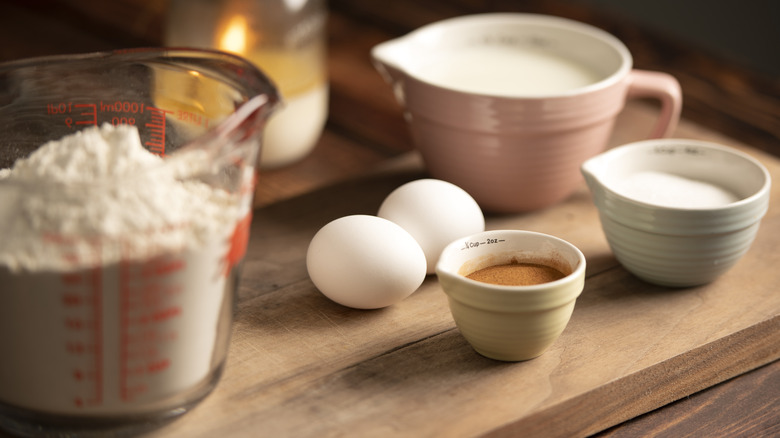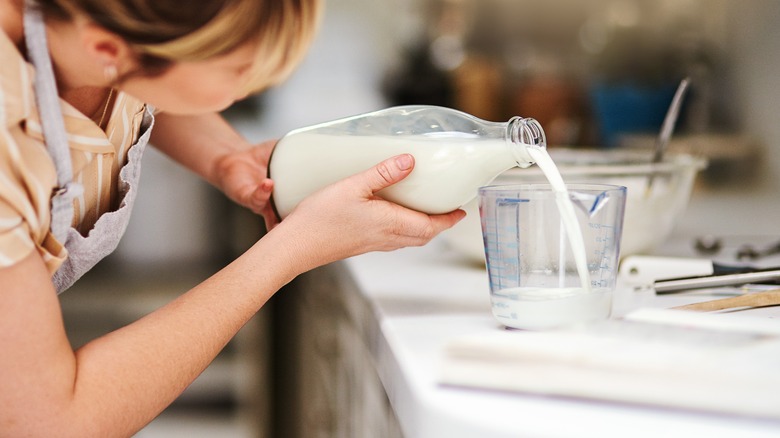Is There A Difference Between Measuring Dry And Wet Ingredients?
If you're an over-thinker, figuring out the difference between wet and dry measuring in the kitchen might send you right over the edge, with an abandoned mess left in the kitchen and a takeout number on speed dial. Let's put your mind at ease and finally make home baking a breeze.
In the U.S., wet and dry ingredients are typically measured by volume, meaning they technically can be measured using the same tools, but this is not ideal. If you take a look at the measurement tools in your kitchen, you'll notice the visible difference between a dry measuring cup (the kind you would use to scoop flour)and one meant for wet ingredients (something you might pour milk into). Although wet and dry ingredients can be measured using the same tools, it doesn't mean you should use the same for both. Wet ingredient measuring cups, for example, tend to have a mouth or spout on one end making it easier to pour out what you've measured.
However, a dry measuring cup of water will have the same weight as one poured into a wet measuring cup. Weight is the great equalizer of these ingredients, and at the core of it all, the main difference between measuring wet and dry ingredients is the tools.
How to get the best measurements for wet and dry ingredients
Pouring milk into a dry ingredient cup with a flat opening will give less accurate results than a wet measuring cup because you'll need to fill it to the brim without spillage. On the flip side, dry ingredient measuring cups' flat opening makes it easier to scrape excess ingredients off to make the measurement of flour or sugar exact (remember to fluff your flour when measuring it for baking). Filling a liquid measuring cup with sugar will be less accurate than using a dry measuring cup because it won't allow you to scrape the excess off as precisely.
It's also best to set a liquid measuring cup down on a flat surface while pouring instead of holding it in your hand, to ensure the movement doesn't cause you to over- or under-pour the ingredient. This is why using the appropriate tools is the best way to measure for recipes. Converting measurements to weight could also bypass most of the confusion regardless of wet or dry, so maybe you should consider buying a kitchen scale.

